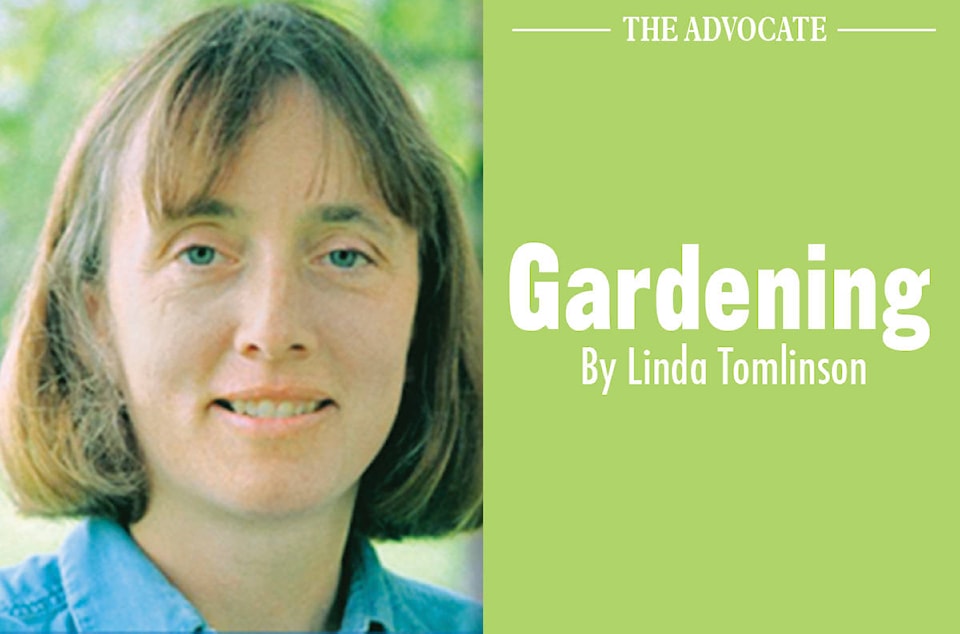To most people insects are to be endured or eradicated. To Dr. Ken Fry, entomologist, instructor and researcher at Olds College they are fascinating creatures to be studied. His enthusiasm for the subject and extensive knowledge was apparent in the talk he gave for the Red Deer and District Garden Club last week.
Ken talk included different varieties of “Bugs” good and bad that typically inhabit Central Alberta’s gardens. As 99% of the bugs are good, leaving 1% as bad it is a matter of using Integrated Pest Management to eliminate or reduce the effects of the bad insects while not disturbing the beneficial ones.
To develop an integrated Pest Management plan, look at the problem insects and if possible alter the landscape to either make it inhospitable for them and to encourage their predators. Ken gave the audience a few simple solutions to everyday gardening problems.
It can be something as simple as placing sticky paper, horizontally a short distance above the ground under a birch tree that was infested with Birch Leaf Minor, brown patches on its leaves, the summer before. As the insects leave the ground they fly upwards towards the tree into the sticky paper.
Carrot Rust flies are small flies that lay their eggs close to carrots. When the larva hatch, they feed on the carrot roots. If they have been a problem in the past, planting the first part of June will help avoid the first fly cycle will help avoid the problem. Another method is to cover the carrots with a polyspun cloth until July when the adults are finished laying eggs. The cloth, when secured to the ground, stops the insects from laying the eggs near carrot roots.
Dew Worms are seen as a problem by anyone that loves a smooth, soft green lawn. Dr. Fry explained that worms are attracted to areas with thick thatch which can build up unless grass cuttings are removed on a regular basis. Removing excess thatch removes the worm burrows and the lumps. Keeping the level of thatch low, makes it harder for the worms to tunnel. Aerating, the lawn and leaving the plugs to break down on the surface brings micro-organisms to the surface that speed up thatch decomposition. Spreading a thin layer of course sand to the surface of the lawn makes the area inhospitable to creatures that slide. Care must be taken to use a rough sand as opposed to the round sand usually found in sand boxes.
Dr. Fry acknowledged that while ants are beneficial in the garden they can also be a problem. Removing them is not easy. If the ant hill if young it can be dug up and the queen ant killed. Older hills are more of a problem. Bait or poison only works if it is available in many locations around the ant hill. The outside ant will take it back to the nest and feed it to the ants by the door. These ants will ingest it and die before being able to pass it to larva or the queen. For bait to work it must become the sole or major food source before it will be fed to larva or the queen.
Dr. Fry cautions that when using poison bait that it is placed where it will not be eaten by other creatures.
Removing ants often rescues the numbers of aphids in the area as ants herd aphids milking them for their honeydew.
When aphids are a problem, take the garden spray and hose down the plants with a strong spray. It will remove and kill many of the insects.
Thought that all soaps were equal? This isn’t the case. Insecticidal soap has more of an acid base that will eat away the insect’s outer surface while dish soaps are formulated to remove grease.
These are just a few of the methods mentioned by Dr. Fry in his lecture and book he co-authored, “Garden Bugs of Alberta”. The book, published by Lone Pine is a must for any person who wishes to develop an Integrated Pest Management system for their yard.
Linda Tomlinson is a horticulturalist that lives near Rocky Mountain House. She can be reached at your_garden@hotmail.com
